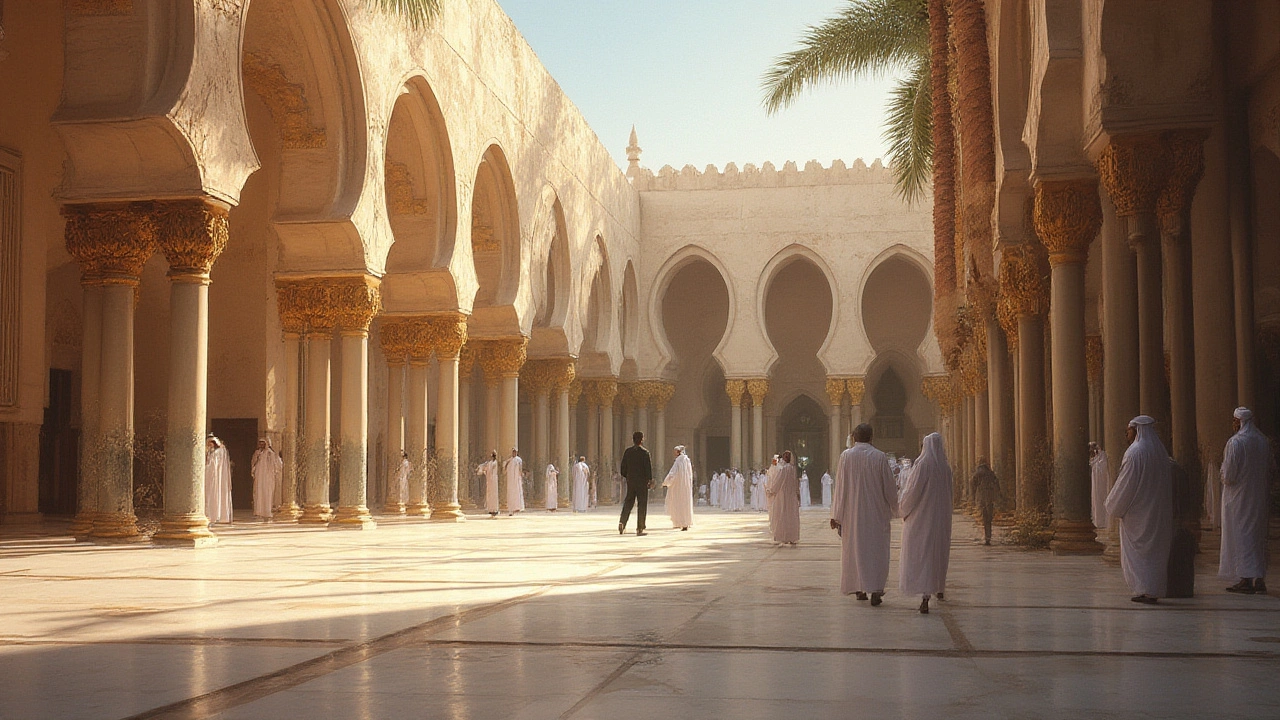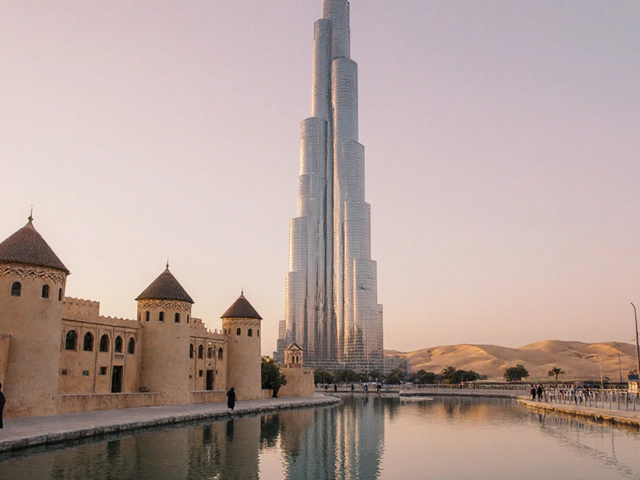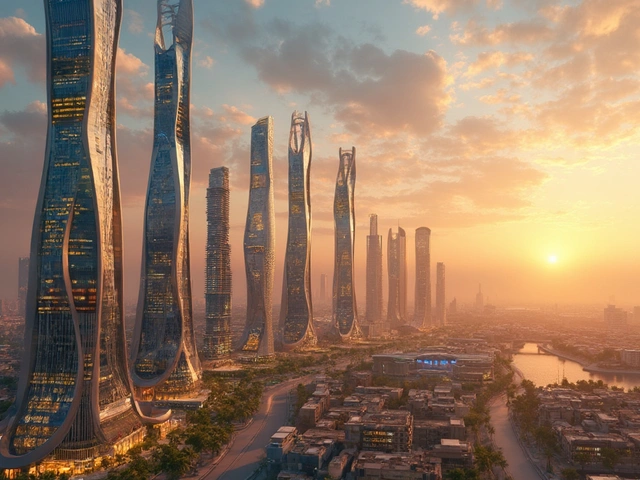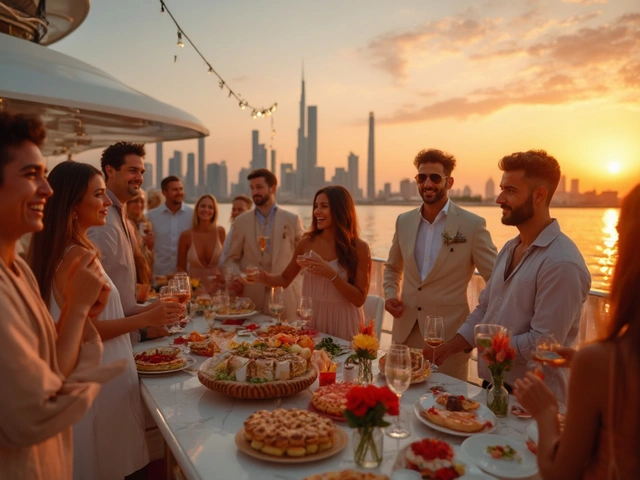Skip the Burj Khalifa for a day. Ever wondered what shaped Dubai before all the skyscrapers and mega-malls? If you’re one of those people who loves tracing old footprints and peeling back dusty layers of the past, Dubai has way more to offer than you might think. The city is full of rich, lived history—if you know where to look. Tucked between the futuristic towers and ever-expanding highways, you’ll find quiet corners, preserved lanes, artifacts, and whispers of the old Dubai that make you feel part of a story still unfolding. Don’t get caught thinking Dubai is only about glitz; just beneath the sheen, its heritage is still alive and ready to explore—if you’re willing to seek it out.
Walk the Living History of Al Fahidi Historic District
If there’s a place where you can immerse yourself into the soul of Dubai, it’s the Al Fahidi Historic District (sometimes called Al Bastakiya). It’s not a place for hurried sightseeing. This storied maze of narrow alleys gives off a real sense that time here has slowed down. The traditional wind-tower houses stand close and the old coral-and-gypsum buildings might be centuries old but carry their age with quiet pride. Ever noticed how the walls are extra thick? They were built to keep out Dubai’s harsh summer heat, even before AC was a thing. These old homes belonged to merchants, pearl traders, and artists. Now many have morphed into tiny museums, art galleries, and heritage cafés. Sipping Arabic coffee at the Arabian Tea House, with its lazy blue benches and old wooden doors left ajar, I felt like I could have sat there a hundred years ago and not much would’ve changed.
The best way to take it all in is actually to slow down and talk to people. Many of the shopkeepers have families who’ve lived here for generations. Catch the Dubai Museum, which sits right inside the 18th-century Al Fahidi Fort. I can’t count how many times friends have visited and—I warned them—they overshoot the entrance because it’s the least flashy museum building in town. But inside, you’ll find everything from old dhow boat replicas to pearl-diving gear, dioramas of souk life, and projections that bring the story alive for kids and adults alike.
If you’re a major fan of hands-on stuff, Dubai’s Coffee Museum in Al Fahidi shouldn’t go unnoticed. They’ll walk you through the history and regional differences in coffee roasting—try guessing which regional flavor has a touch of cardamom before they tell you. If your curiosity still isn’t satisfied, check out the Sheikh Mohammed Centre for Cultural Understanding. Their motto is “Open Doors, Open Minds”—and they take it seriously. Their local hosts answer even the weirdest questions about Emirati life, customs, and dress codes. I took my wife Adeline there on our first Ramadan in Dubai, and the Iftar experience gave us real insight into local tradition. You don’t just get a meal—you get stories, legends, and the chance to taste Emirati machboos (spiced rice) at its most authentic.
Don’t miss out on getting lost in the alleys at sunset. The shadows play on ancient walls, muezzin calls echo from the nearby Grand Mosque, and the entire district turns golden. It’s one of those rare places where you’re as likely to hear locals talking about their childhood memories as to stumble into a contemporary art pop-up.
Iconic Landmarks and Forts: Dubai’s Old Defenders
Even if you’ve grown up in Dubai or lived here ages, most folks drive past some of Dubai’s strongest symbols and barely blink. Al Fahidi Fort, which anchors Dubai Museum, stands as the city’s oldest building. Built way back in 1787, it was originally meant to guard Dubai’s landward approach from raiders and still has the scratches and repairs of centuries. Unlike the bright marble of modern Dubai, its mud-brick defenses turn almost pink in late afternoon light. Step into the courtyard and it feels like stepping onto a film set—minus digital trickery. They even kept the old cannons, their barrels silent reminders of a much rougher past.
Next up in the defense story comes the restored Al Shindagha district. There’s something magical about the Shindagha Museum: Dubai Creek—this sprawling heritage center sits right by the spot where Dubai first became a port city. Long before oil or global malls, Dubai made its fortune as a stopover for dhows loaded with gold, spices, and even eager British explorers. The museum’s exhibits use personal stories and interactive displays to weave together what daily life on the Creek looked like for traders, pearl divers, and fishermen. There’s even a table below with some quick facts:
| Landmark | Year Built | Primary Use |
|---|---|---|
| Al Fahidi Fort | 1787 | Defense/Museum |
| Sheikh Saeed Al Maktoum House | 1896 | Ruler’s Residence/Museum |
| Al Shindagha Watchtower | Mid-19th Century | Creek Guard |
| Jumeirah Archaeological Site | 6th Century AD | Ancient Settlement |
The Sheikh Saeed Al Maktoum House, rebuilt with care, offers a peek into the life of Dubai’s ruling family before the age of penthouse views. The breezy courtyards, arched doorways, and imported Indian teak scream understated old-money luxury. This is where trade treaties were made, where kids played hide and seek behind carved wooden screens, and where official visitors got their first taste of Emirati hospitality. There are vintage photos inside that’ll make you do a double take: Sheikhs posing beside old Land Rovers, pearl merchants fencing deals, 1950s Dubai with nothing but stretches of sand behind the Creek.
For those hunting for something even older, Jumeirah Archaeological Site is a must. First uncovered in the 1960s, this site dates back 1,400 years. Archaeologists unearthed the foundations of old houses, a caravan station, and fragments of pottery and glass that point to ancient trade links all the way up the Arabian Gulf. Walking the grounds, it’s hard not to imagine what it felt like for early traders to crest the dunes and spot the glint of the Gulf in the distance. The city was always a crossroads, even when it just looked like a windy village huddled around the creek.
And don’t forget the humble watchtowers that still dot the Creek and some inland villages. Restored, but unmistakable, these simple towers once kept watch for pirates, seasonal floods, and approaching caravans—always ready for a signal fire.

Souks, Mosques, and Living Traditions: Dubai’s Cultural Hotspots
History in Dubai isn’t hidden away in locked glass cases. You’ll feel it most where the city buzzes in everyday life—like its famed souks and mosques. If you’ve spent any time in Deira or Bur Dubai, you know the Gold Souk’s streets smell of metal polish and hope. Few places on earth can match the Gold Souk’s pure sensory overload. Hundreds of shopfronts glitter with 24-karat jewelry—not just for tourists, but for wedding dowries, anniversaries, and deals between Dubai’s oldest merchant families. Ever tried haggling for a gold chain? Don’t be shy, it’s encouraged. Just last Eid, Adeline and I managed to negotiate a pair of earrings down to half the starting price—though she thinks the real prize was the coconut water from a nearby stall.
Spice Souk is just next door, a stone’s throw from old wooden dhow wharves. Here, cardamom, cinnamon, saffron, and frankincense fill the air—a smell that hasn’t changed in centuries. Want to impress your dinner guests? Bargain for Persian dried limes or local Emirati bezar spice, and ask shopkeepers for a sample or their favorite old-school recipes. Many will share a family secret if you earn their trust.
From there, hop on an abra—the traditional wooden ferry—and cross Dubai Creek, the same way people did a hundred years ago. For just a few dirhams, the view from the middle of the Creek (especially at sunset) gives you a panorama of minarets and old merchant houses, with the modern skyline looming in the distance like a promise of what’s next. It’s easy to forget you’re in the heart of a global city when the boatman’s engine sputters and kids wave from the banks.
The mosques of Dubai also open history’s door wide. The Jumeirah Mosque, the city’s most photographed, welcomes non-Muslims for twice-daily tours. Run by friendly hosts, the walk-through lets you see how Emirati communities come together, pray, and celebrate milestones. Don’t forget to dress modestly—ladies get scarves and long cloaks at the gate, and everyone is offered dates and Arabic coffee. These visits always spark deep conversations—our friends still talk about the Q&A session, which revealed how weddings and funerals are celebrated in real Dubai neighborhoods. You’ll realize how spiritual and social life blend together, nothing forced or hidden behind glass.
What about less obvious traditions? Ramadan night markets, Diwali celebrations in Meena Bazaar, and even camel racing draw on historical roots. They’re not “attractions” in the brochure sense—but if you’re paying attention, bits of Dubai’s past sneak into today’s parties, foodie fests, and local events. Dubai Heritage Village in Al Shindagha opens a living window to traditions with pottery demos, falconry shows, and festivals timed to dhow arrivals. Kids can try pearl diving simulations (wet suit not required)—a nod to how half the city’s ancestors built fortunes from the sea long before there was oil or air conditioning.
Museum of the Future and Etihad Museum pull Dubai’s history right into the present. The first looks ahead—sometimes wild, sometimes spot-on—with interactive displays on technology and sustainability that all reference Dubai’s drive to link its past to a bold future. Etihad Museum, meanwhile, anchors itself firmly in the moment of the UAE’s founding—with artifacts, photographs, and even recreations of the exact tent where the seven emirates’ rulers signed the agreement in 1971. If you want your historical deep dive wrapped in architectural beauty, this place can’t be beat.
Unlike other cities, Dubai doesn’t lock away its history behind velvet ropes. Every corner, from heritage districts to buzzing souks, still rings with the pulse of the past. For anyone craving story, culture, and the thrill of discovery, the city is an open atlas—with its secrets ready for anyone who dares to look closer.






